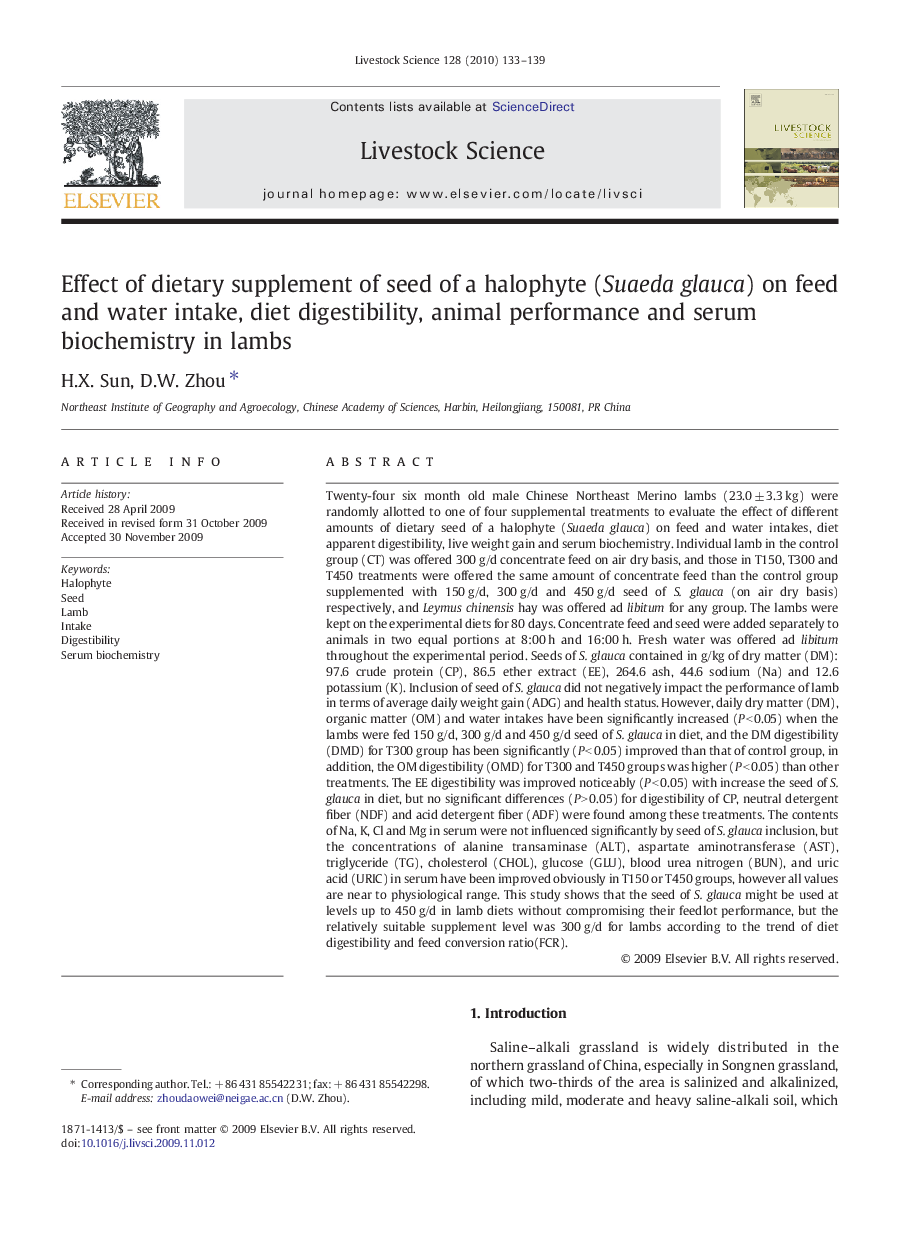| Article ID | Journal | Published Year | Pages | File Type |
|---|---|---|---|---|
| 2447900 | Livestock Science | 2010 | 7 Pages |
Twenty-four six month old male Chinese Northeast Merino lambs (23.0 ± 3.3 kg) were randomly allotted to one of four supplemental treatments to evaluate the effect of different amounts of dietary seed of a halophyte (Suaeda glauca) on feed and water intakes, diet apparent digestibility, live weight gain and serum biochemistry. Individual lamb in the control group (CT) was offered 300 g/d concentrate feed on air dry basis, and those in T150, T300 and T450 treatments were offered the same amount of concentrate feed than the control group supplemented with 150 g/d, 300 g/d and 450 g/d seed of S. glauca (on air dry basis) respectively, and Leymus chinensis hay was offered ad libitum for any group. The lambs were kept on the experimental diets for 80 days. Concentrate feed and seed were added separately to animals in two equal portions at 8:00 h and 16:00 h. Fresh water was offered ad libitum throughout the experimental period. Seeds of S. glauca contained in g/kg of dry matter (DM): 97.6 crude protein (CP), 86.5 ether extract (EE), 264.6 ash, 44.6 sodium (Na) and 12.6 potassium (K). Inclusion of seed of S. glauca did not negatively impact the performance of lamb in terms of average daily weight gain (ADG) and health status. However, daily dry matter (DM), organic matter (OM) and water intakes have been significantly increased (P < 0.05) when the lambs were fed 150 g/d, 300 g/d and 450 g/d seed of S. glauca in diet, and the DM digestibility (DMD) for T300 group has been significantly (P < 0.05) improved than that of control group, in addition, the OM digestibility (OMD) for T300 and T450 groups was higher (P < 0.05) than other treatments. The EE digestibility was improved noticeably (P < 0.05) with increase the seed of S. glauca in diet, but no significant differences (P > 0.05) for digestibility of CP, neutral detergent fiber (NDF) and acid detergent fiber (ADF) were found among these treatments. The contents of Na, K, Cl and Mg in serum were not influenced significantly by seed of S. glauca inclusion, but the concentrations of alanine transaminase (ALT), aspartate aminotransferase (AST), triglyceride (TG), cholesterol (CHOL), glucose (GLU), blood urea nitrogen (BUN), and uric acid (URIC) in serum have been improved obviously in T150 or T450 groups, however all values are near to physiological range. This study shows that the seed of S. glauca might be used at levels up to 450 g/d in lamb diets without compromising their feedlot performance, but the relatively suitable supplement level was 300 g/d for lambs according to the trend of diet digestibility and feed conversion ratio(FCR).
